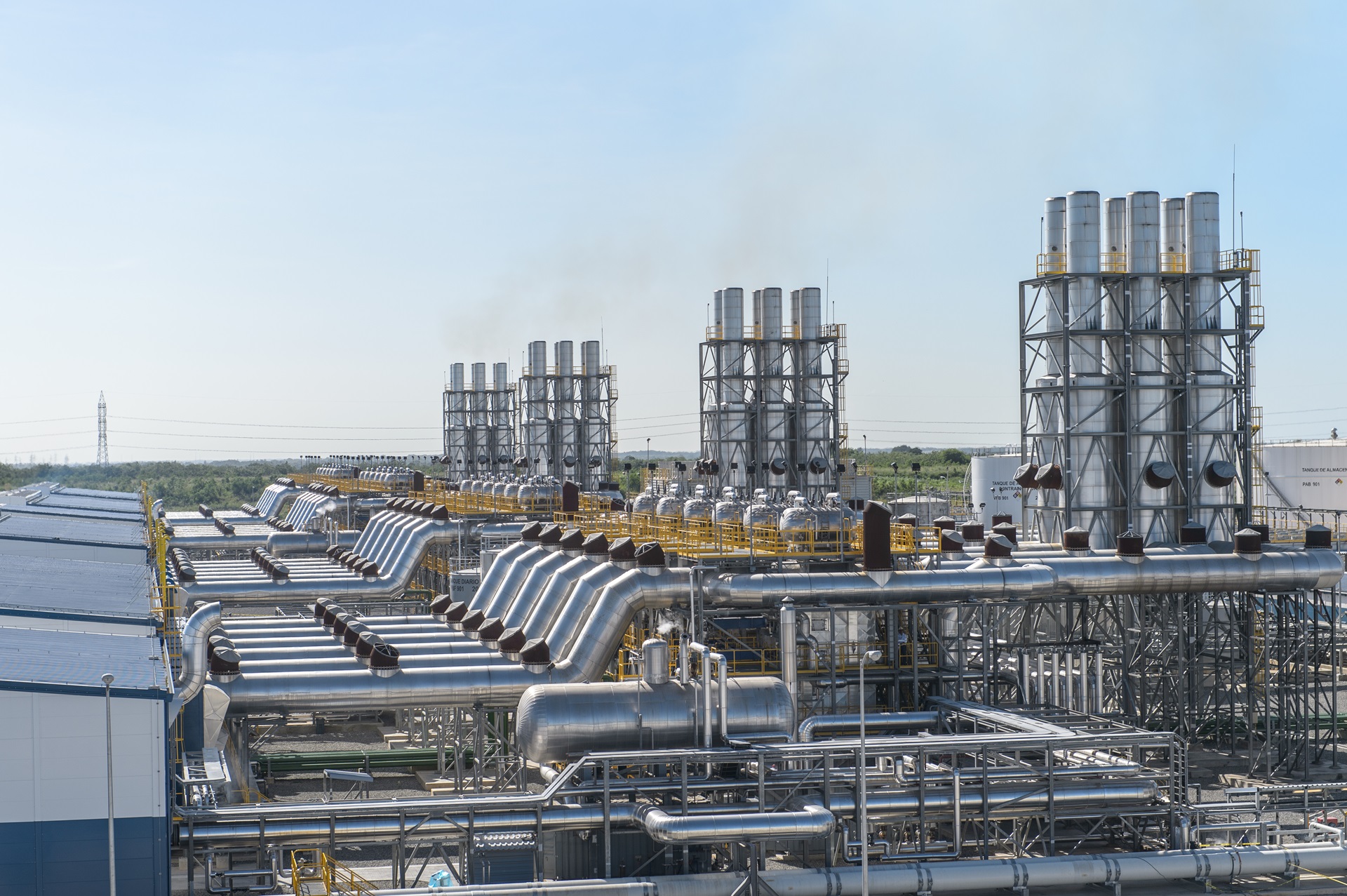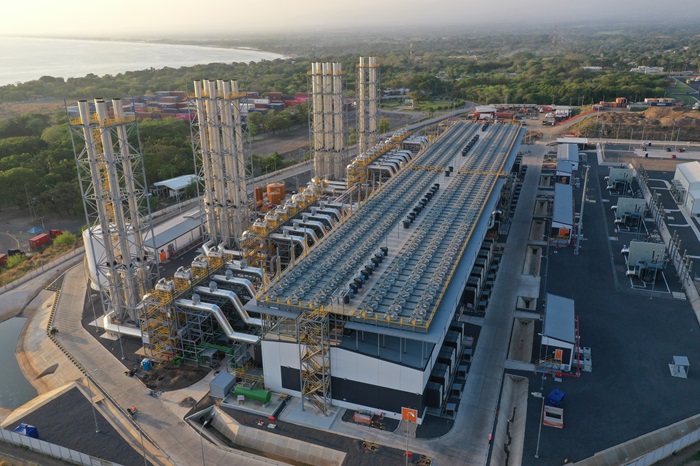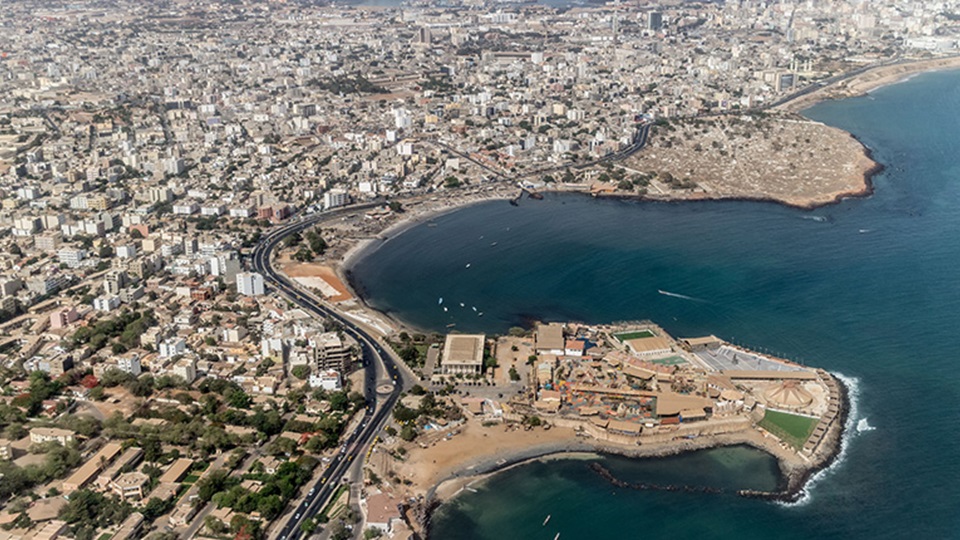

Flexicycle™ power plants
Our Flexicycle™ power plants combine the advantages of a flexible simple cycle plant with the high efficiency of a combined cycle plant. Fast load-following power is needed to maintain system reliability, as the share of intermittent renewable energy increases in the power system. The Flexicycle™ solution provides the flexibility needed to facilitate the integration of renewable energy.
As the Flexicycle power plant, supported with lifecycle services, is both agile and highly efficient, it enables competitive performance on both the energy and capacity markets. Depending on the power system, Flexicycle power plants can also be the optimal choice for efficient flexible baseload power generation. The solution is based on a gas, multi-fuel, or liquid fuel engine power plant combined with a steam turbine.

The combination of flexibility and efficiency
The Flexicycle power plant offers a unique combination of flexibility and efficiency. With quick synchronisation and start-up to full engine power in less than five minutes, the Flexicycle plants can be dispatched immediately when an imbalance between supply and demand begins to occur. The solution enables unlimited quick start-up, loading and shut down capabilities without additional costs nor impact on maintenance schedules.
The multi-unit design of engine power plants offers optimised flexibility. High efficiency can be maintained across a wide load range as engine power plant can quickly adjust load by bringing additional engines online or offline to meet changes in demand. In addition this allows optimised plant sizing throughout the lifecycle.


1. ISO conditions sea water cooling
2. Ambient temp 30C
3. Cooling with ACC
4. Gas compression paracitic load
5. Average load 80%
6. Degradation after one year of operation
7. Effects of 100 starts/year
In the Flexicycle concept, the dynamic features of simple cycle combustion engines are maintained as the steam production can be turned on and off individually for each generating set. Additionally, the combined cycle mode, with an optimum efficiency more than 54% (ISO conditions), is ideal for baseload operation and allows for lower carbon emissions per produced kW compared to simple cycle operation.
The Flexicycle power plant solution’s two-in-one characteristic makes it a very competitive solution for handling a grid system’s intermediate load. Thanks to its high combined cycle efficiency, the Flexicycle power plant can also be the optimal choice for flexible baseload generation, depending on the power system’s capacity mix. Features such as fast synchronisation and ramp times, as well as the flexibility of multiple independent units, make these power plants outstandingly well suited to supporting grid systems that require flexibility because of daily load fluctuations, or that have a significant installed base of wind or other non-dispatchable power. It is a perfect solution for both municipal power generation and for the larger utility market.
Flexicycle™ technology
In Flexicycle solution, each engine is equipped with a waste heat recovery steam generator. The power plant has a common steam turbine with a condenser. The power plant cooling is typically arranged so that the engines are cooled with closed loop radiators, and the steam cycle with radiators, a cooling tower, raw water or an air cooled condenser. Radiator cooling or air cooled condensers for steam cycle ensures low water consumption of the plant. The fuel flexibility of our solutions enables the choice and utilisation of the most feasible fuels, including natural gas and many other gases, as well as most fuel oils. The customer can also choose to run their plant on multiple fuels.

Flexicycle™ with radiators
The Flexicycle with radiators solution reduces the acquired footprint of the power plant by placing the entire cooling system on the roof. The water consumption of this solution is very low. A Flexicycle power plant with radiators is particularly well suited for cold and moderate climate conditions especially where water consumption is an issue.

Key benefits of Flexicycle™ power plants
High part load efficiency and a wide load range
Engines have an exceptional efficiency at part load, which becomes even more valuable in modular plant designs. Also, with Flexicycle plants, the steam production can be turned on and off individually for each generating set to enable flexible operations.
Immediate dispatch with no additional maintenance costs
With short start and shut down times, as well as fast ramp-up capability the Flexicycle plants can be dispatched quickly when required, without impacting maintenance schedules or creating additional costs.
Lower fuel consumption and carbon emissions
Combined cycle operation extends the plant’s electrical efficiency past 54% (ISO conditions). While fuel consumption and carbon emissions are the same as in simple cycle operation, the relative carbon emissions and fuel consumption per produced kW will be lower in combined cycle operation.
Technology comparison: Engine vs Aero
Curious to find out which is more flexible, reciprocating internal combustion engine or aeroderivative gas turbine? Learn that and more in our technology comparison article series.

References
Would you like to know more?
Contact us
Fill in a contact form and our experts aim to be in contact within 1-2 business days. Contact us »
Read our brochure
Read our product brochure to get all the details. Download brochure »
Find your local office
News
Wärtsilä’s flexible engine solutions will further support Italy’s transition towards its renewable energy targets
The technology group Wärtsilä will supply the engines with auxiliaries for a 75 MW power plant being built in Termoli, on the Adriatic coast of Italy. The plant has been contracted by energy utility Metaenergiaproduzione, and is under construction by FATA SpA, a member of the Danieli Group. The order with Wärtsilä was placed in April 2022, and booked as order intake in June.
The fast-starting Wärtsilä solution provides efficient grid balancing, enabling the utility to participate in Italy’s capacity market designed to promote the use of renewable energy sources. The plant will be on call by Terna, the national transmission system operator, to supply energy on demand to compensate for fluctuations in supply from solar and wind sources. The Wärtsilä engines can reach full output within minutes of start-up.
“FATA is developing opportunities in Italy’s capacity market and from renewable sources, and Wärtsilä was the natural choice for us to realise this new project,” said Italo Ballestrelli, FATA Executive Vice President. “Italy plans to triple its solar and double its wind energy production by 2030, and the flexibility of the Wärtsilä engines, coupled with their experience in this specific segment, are key enablers for this ambition.”
“We are pleased to be working for the first time with FATA on this important project. Decarbonisation of energy production is a goal that we at Wärtsilä support wholeheartedly and is central to our strategy. Efficiency and flexibility are the pillars upon which decarbonised production can be established, and that is what we strive to provide,” said Kenneth Engblom, Vice President, Africa & Europe, Wärtsilä Energy.
The entire delivery scope includes four Wärtsilä 50SG engines featuring high efficiency and fuel economy, plus auxiliaries, control panels, technical advisory services, the operators' interface system, and commissioning. The engines will be operating on natural gas. Wärtsilä engines are ready to also operate on sustainable fuels in the future, once they become widely available, which makes them a future-proof solution. Already today Wärtsilä engines can use synthetic and carbon-neutral methane and methanol, as well as hydrogen blends. Sustainable fuels together with engines can serve long-term energy storage needs for periods with persistently low wind or solar conditions.
The Wärtsilä equipment is scheduled for delivery in early 2023, and the plant is expected to become fully operational a few months later.
Wärtsilä has delivered 1,411 MW of power plant capacity to Italy, of which 709 MW are today covered by Wärtsilä long-term service agreements. Wärtsilä has a delivery centre in Trieste, and service offices in Genoa, Naples and Taranto.
Learn more:
Wärtsilä balancing solutions for energy industry
Europe’s Energy Future
Wärtsilä in Europe
Atlas of 100 % renewable energy: Italy
Media contact for more information on this release:
Jost Ehrnrooth
Marketing & Communications
Wärtsilä Energy
Mob: +358 400 988 622
jost.ehrnrooth@wartsila.com
Image caption: Italo Ballestrelli, FATA EPC Executive Vice President, COO; Marco Golinelli, Wärtsilä Sr. Business Dev. Manager, Sales & Commercial; Stefano Avenati, FATA EPC Head of Sales and Proposals, at the agreement signing ceremony. © Wärtsilä Corporation
All Wärtsilä releases are available at https://www.wartsila.com/media/news-releases and at http://news.cision.com/wartsila-corporation where the images can also be downloaded.
Wärtsilä Energy in brief
Wärtsilä Energy leads the transition towards a 100% renewable energy future. We help our customers in decarbonisation by developing market-leading technologies. These cover future-fuel enabled balancing power plants, hybrid solutions, energy storage and optimisation technology, including the GEMS energy management platform. Wärtsilä Energy’s lifecycle services are designed to increase efficiency, promote reliability and guarantee operational performance. Our track record comprises 76 GW of power plant capacity and 110 energy storage systems delivered to 180 countries around the world.
https://www.wartsila.com/energy
Wärtsilä in brief
Wärtsilä is a global leader in innovative technologies and lifecycle solutions for the marine and energy markets. We emphasise innovation in sustainable technology and services to help our customers continuously improve their environmental and economic performance. Our dedicated and passionate team of 17,000 professionals in more than 200 locations in 68 countries shape the decarbonisation transformation of our industries across the globe. In 2021, Wärtsilä’s net sales totalled EUR 4.8 billion. Wärtsilä is listed on Nasdaq Helsinki.
www.wartsila.com







